Playful illustrations for a tuition company
The One Tuition

Learning can be playful and exciting!
These illustrations are part of a project with a UK-based tuition company, “The One Tuition”. When creating the visuals, I wanted to reflect the company’s friendly, mentorship-based approach to tutoring, as opposed to purely academic education.

How can learning be visualised as fun, friendly and playful?
The One Tuition wanted their website's illustrations to make them stand out alongside other tuition companies — they wanted the illustrations to create a consistent, recognisable visual language that could then become a part of their branding, all while appealing to an audience of young pupils, and making their learning experience even more enjoyable.

Colours, characters and communication
Inspired by the visual approaches in Headspace and Dumb Ways to Die, I wanted to stray away from the predictable, flat illustrations that one would usually expect on academic platforms, and give the company a unique and playful voice that could then communicate with the potential students.





A digital experience that combines love, mystery and artificial intelligence
The AI Fortune Teller
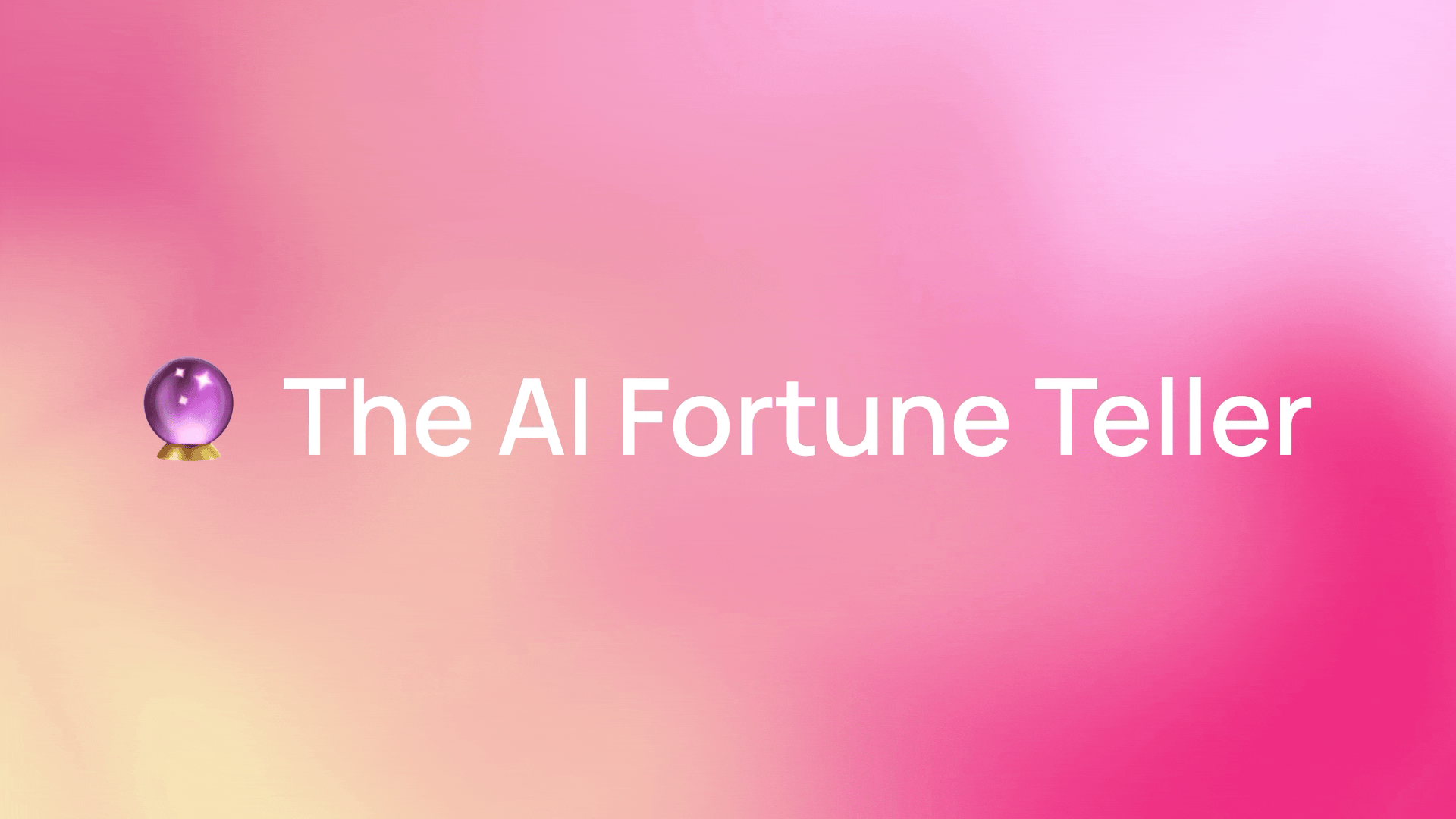
What will your love life look like in 2025?
You can now use artificial intelligence — or, to be more precise, an AI Fortune Teller, to find out. Curious to see how human fascination with prophecies can have a technological twist, Matt Bristow, Yaroslava Tensina and I worked together to create an interactive digital experience where anyone could get a personalized love prediction from an AI Fortune Teller.
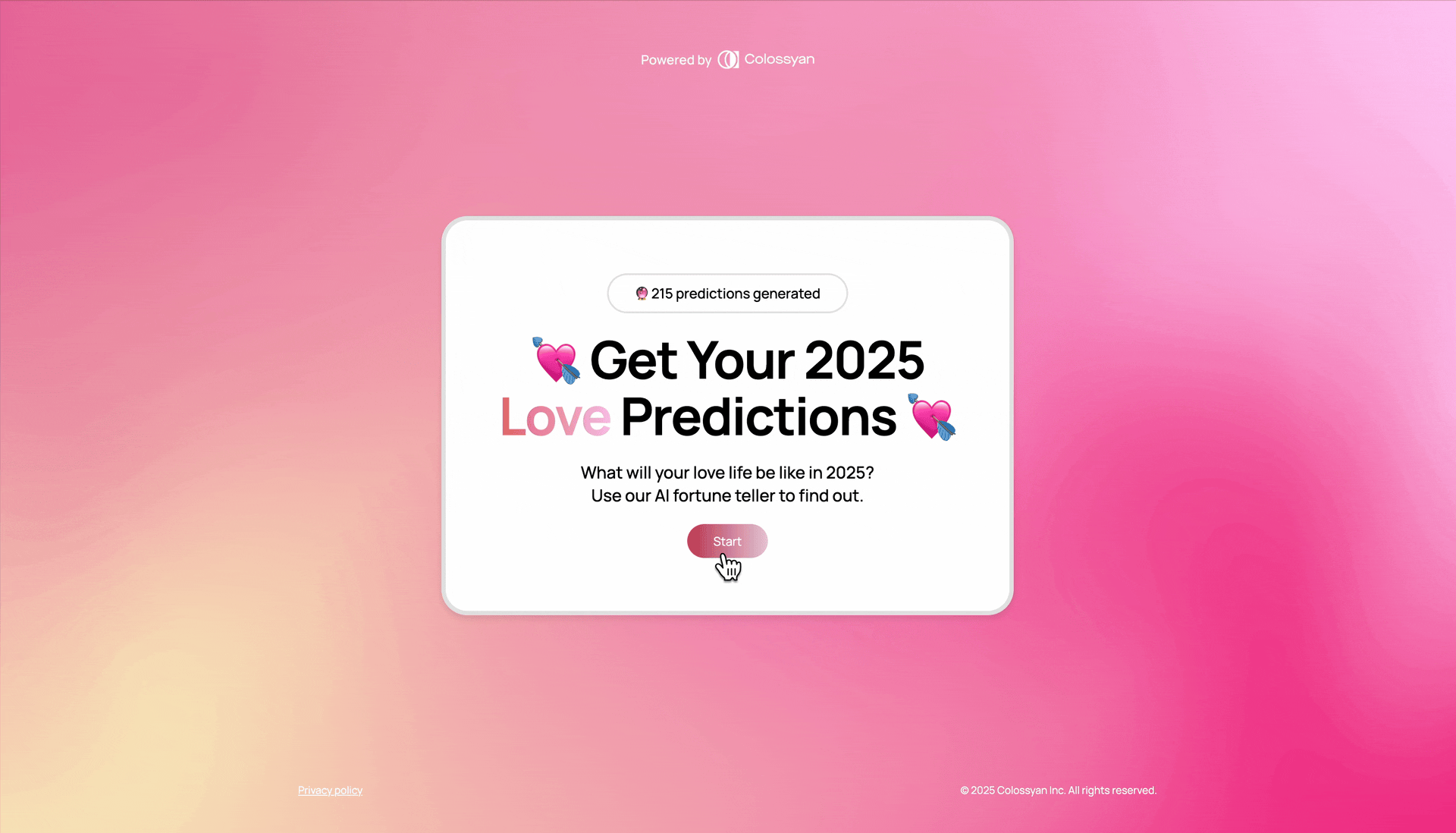
How does it work?
Aside from magic and love, this project also involved the Colossyan API for video generation, RunwayML for character creation, Figma for web design, ChatGPT for prediction-making, and finally, some JavaScript mastery by Matt Bristow.
To get a personalized video response with the AI Fortune Teller revealing one’s love future, all one needs to do is leave their name and pick an emoji. Once the AI Fortune Teller is done blending cosmic messages with technological algorithms, the prediction appears in the person’s inbox.
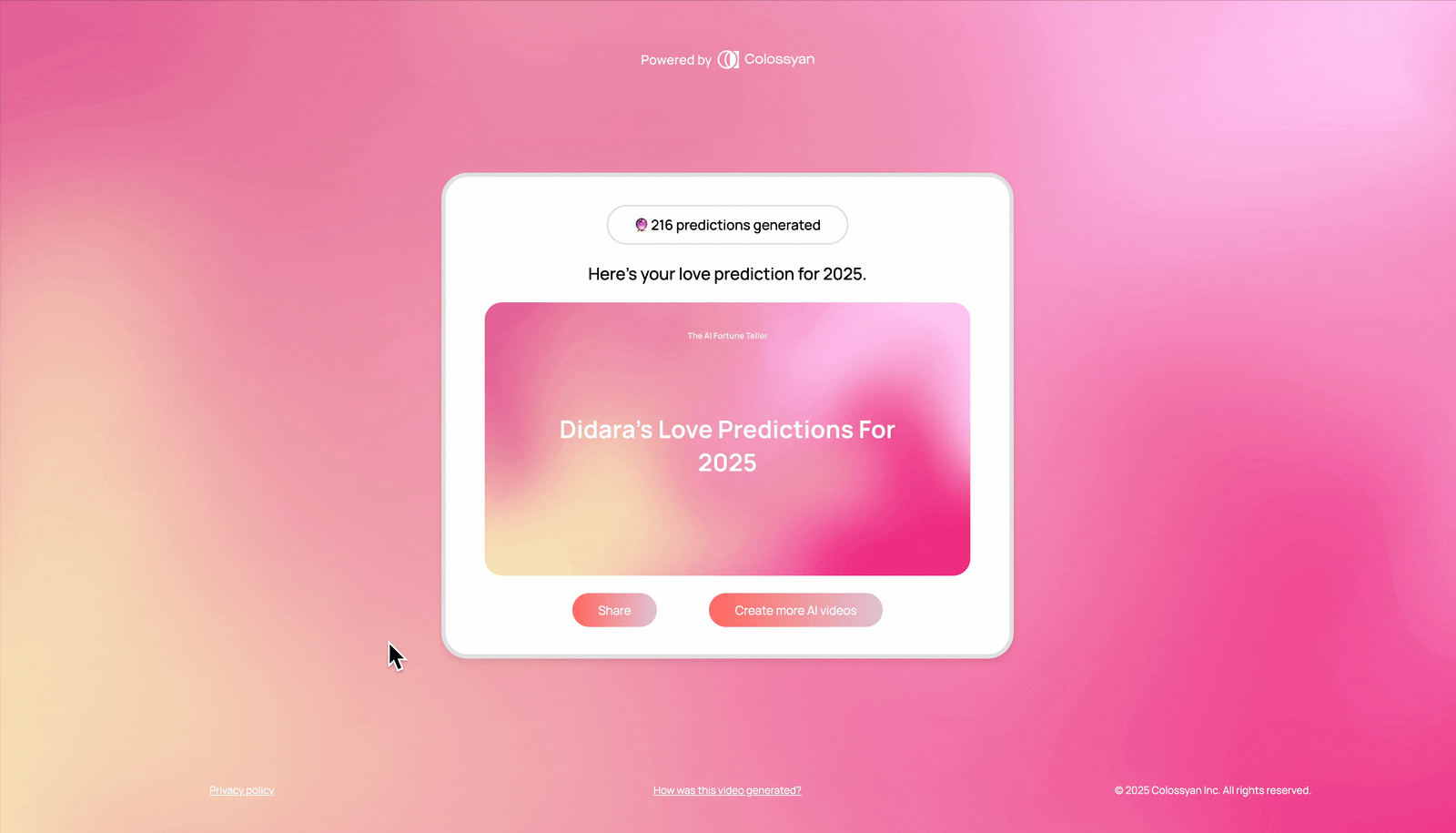
The intersection of technology with our desire to know the future
The mysterious act of fortune telling is still prevalent in 2025 — perhaps, not all around in the world, but certainly where I’m from. It’s human nature to long for answers and foresight, especially when the state of the world is far from stable. From horoscopes to social media quizzes, our desire to know the future takes different shapes and forms, and adapts itself to match our ways of absorbing information.
How much of it is real, and how much of it is only there to make us feel better, and as a result, make decisions in a calmer and more positive state of mind? While many of us probably know the answer, there is still beauty in exploring the concepts of fortune telling and prediction making — especially with so many tools available to play with.
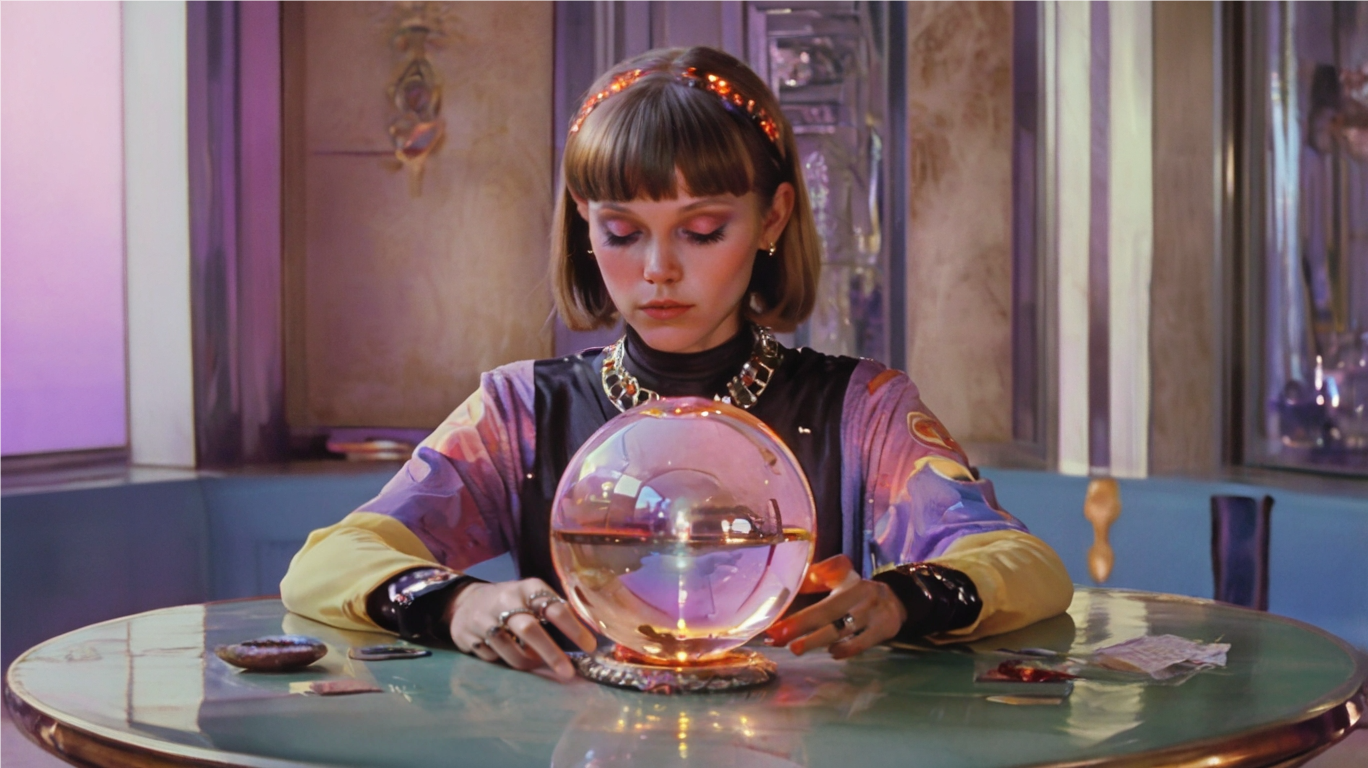
Try out the AI Fortune Teller yourself: www.loveprediction2025.com
P.S. Our team takes zero responsibility if you’re not predicted any love in 2025.
A concept for an app aimed at personalizing the user’s urban experience
The Fake Tour
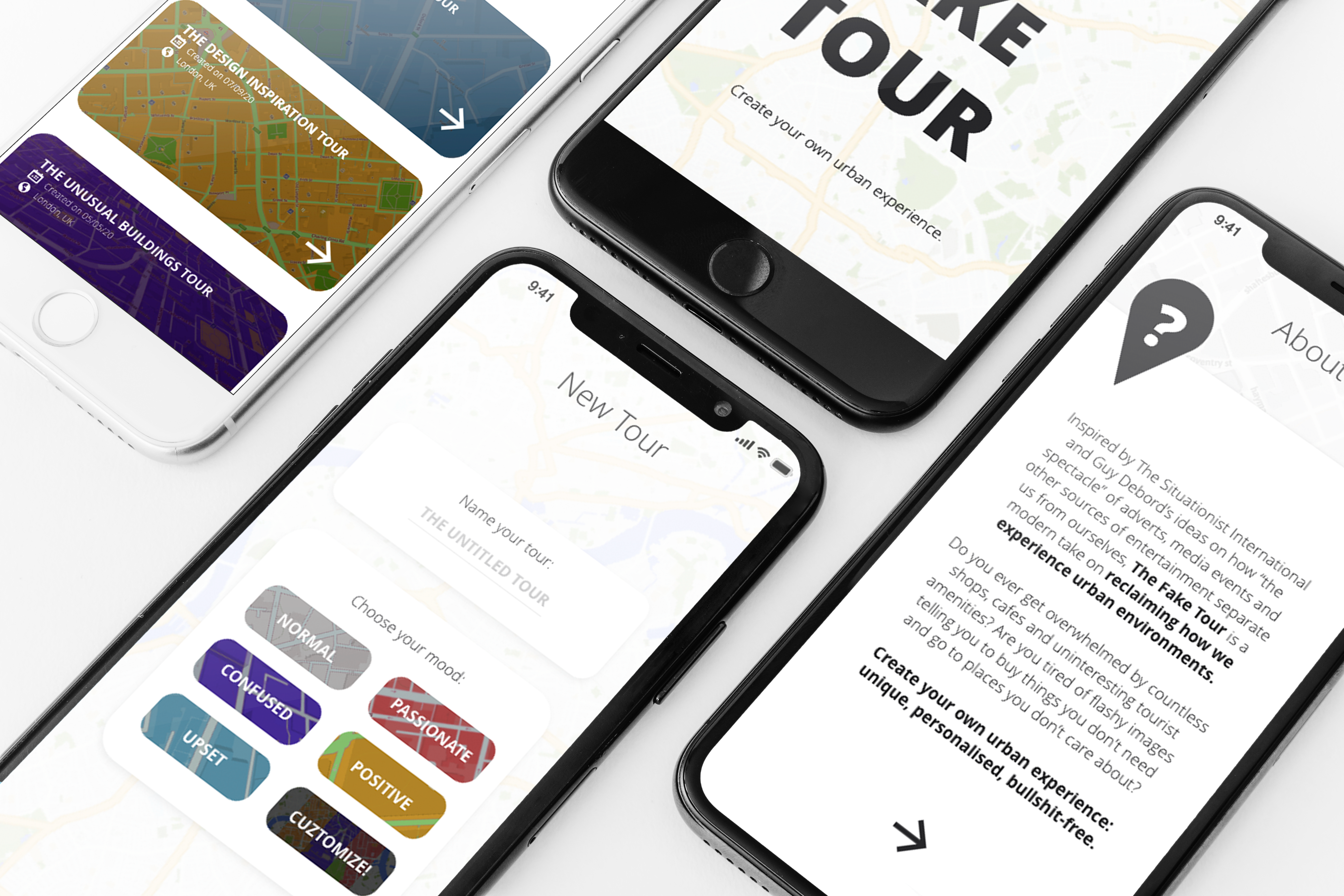
The Fake Tour: Create your own urban experience.
An app for documenting your personal tours around the city.
Through this concept, I wanted to solidify the idea that one’s relationships with their surroundings is a personal matter, and therefore shouldn’t be determined by “where the viral pancakes are”, or “what’s on sale”. Inspired by Guy Debord's ideas on how our regular consumption of media & advertisting separate us from our true selves, this app is a modern take on reclaiming how we experience urban environments.
An app for documenting your personal tours around the city.
Through this concept, I wanted to solidify the idea that one’s relationships with their surroundings is a personal matter, and therefore shouldn’t be determined by “where the viral pancakes are”, or “what’s on sale”. Inspired by Guy Debord's ideas on how our regular consumption of media & advertisting separate us from our true selves, this app is a modern take on reclaiming how we experience urban environments.

This hypothetical app would allow its users to create personal "tours" based on their own values and memories, as opposed to tours focused on spending and usual tourist amenities.

Urban environments grow and develop one foot at a time as the societies living in them, which is why it is in our interests to make those environments authentic, enjoyable — and at their very core, human-oriented.

Documenting my journey of practicing UX writing and design
The Daily UX Writing challenge
As a way to practice my UX writing — as well as UX and UI design skills, I’ve taken on Ryan Farrell’s 15 Day UX Writing Challenge, where each day, I was sent a problem to solve. This challenge has been a great opportunity to not only practice human-centered writing, but also to play around with experiences & interfaces, while keeping in mind the intended audience.The Daily UX Writing challenge
Day 1: A flight cancellation message.


Day 2: A promotional screen for a sports app.

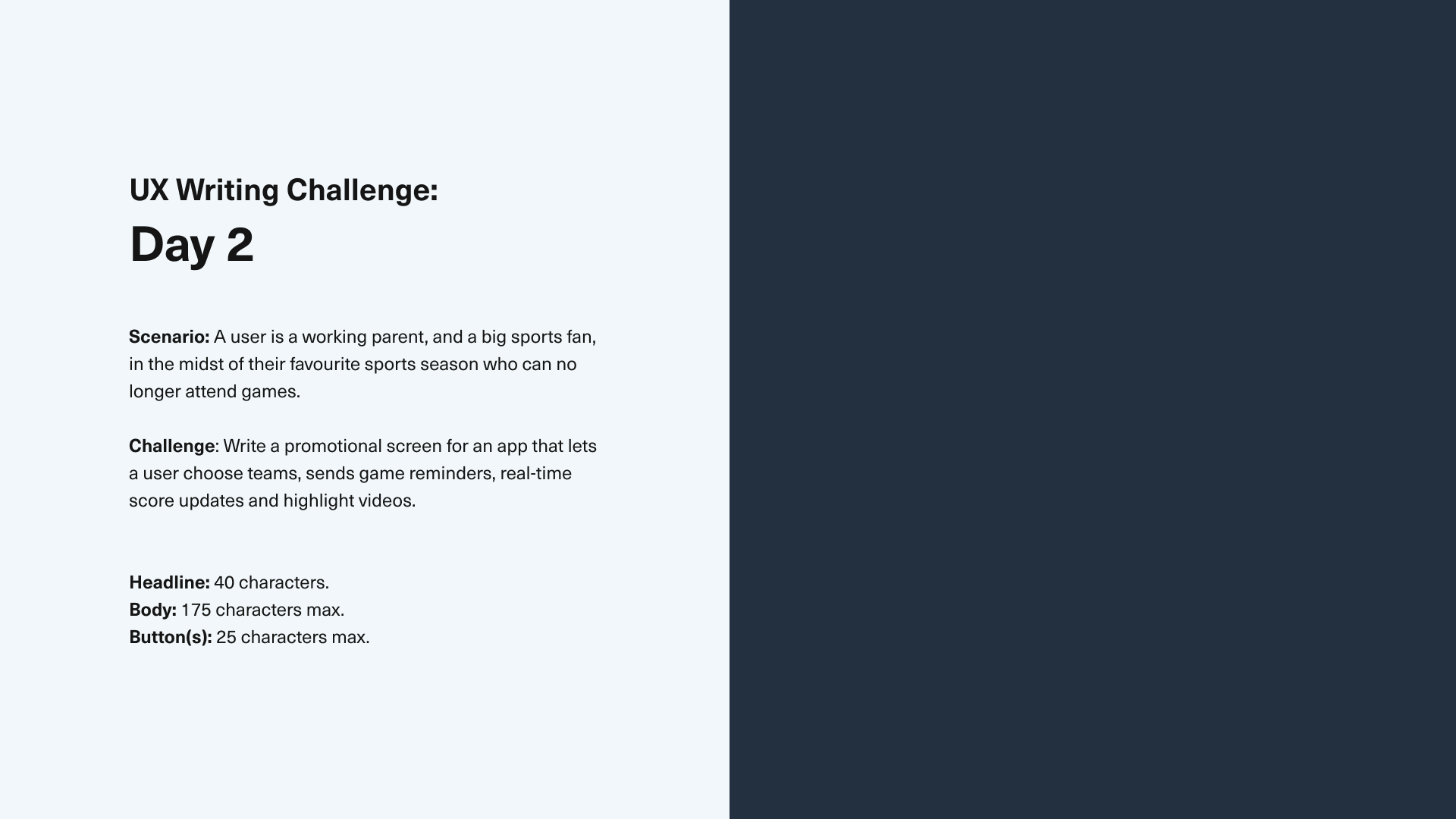
Day 3: An error message when entering the wrong email.


Day 4: A promotional message for a supermarket’s app.


Day 5: A message to the user after the app has crashed.
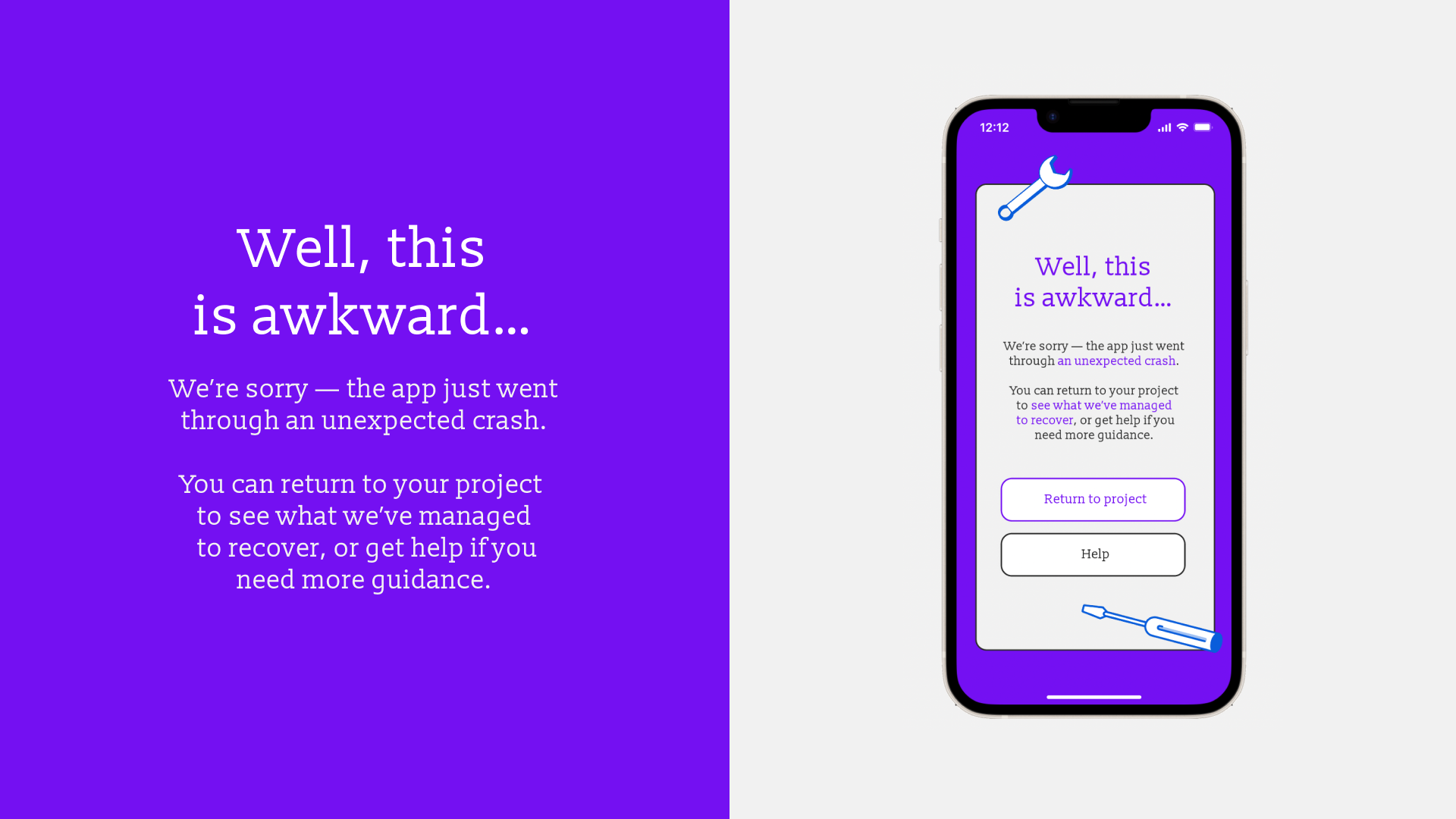

Day 6: A warning about road closures due to a fire.

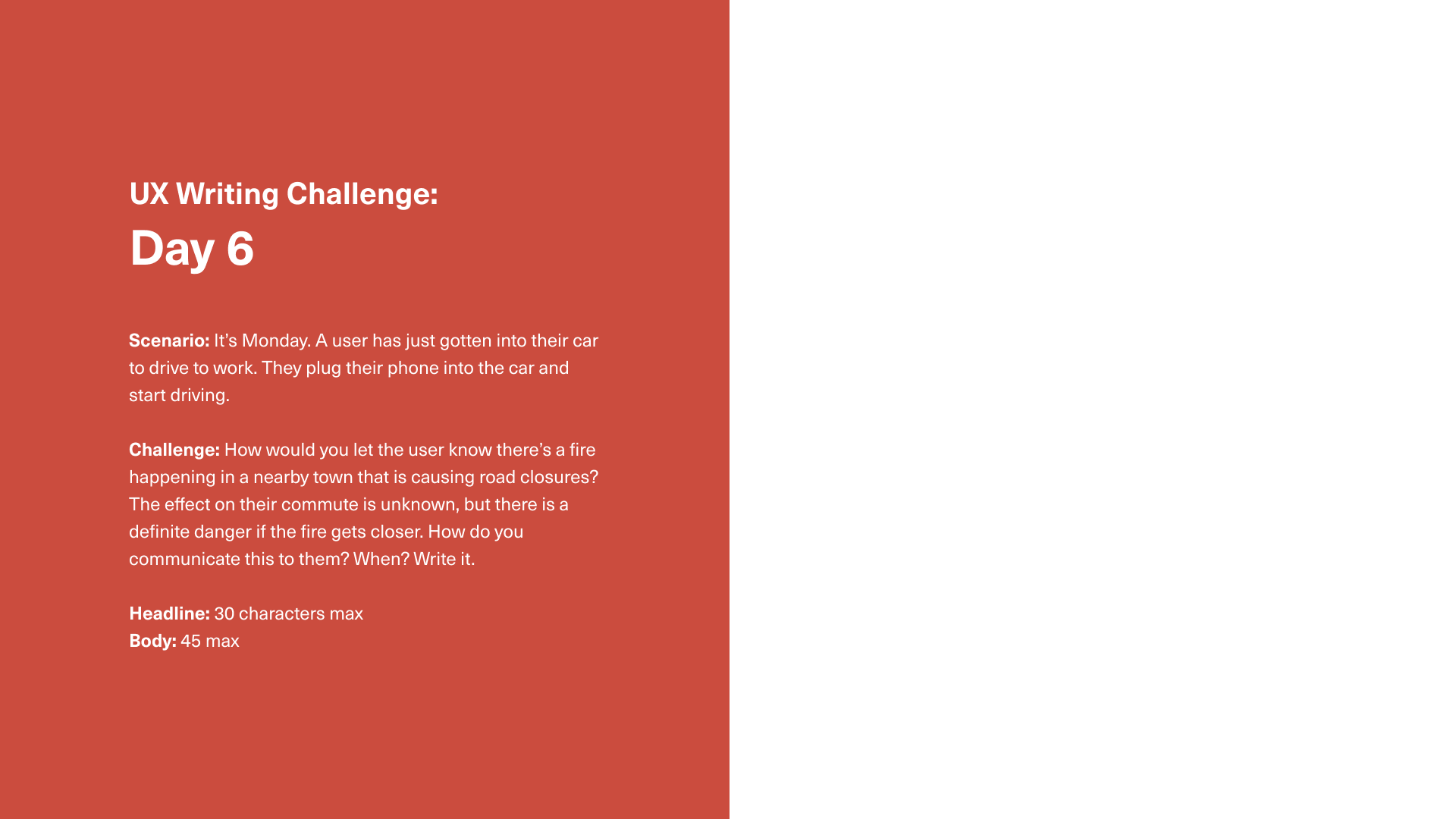
Day 7: A sports fan getting quick & short game updates.


Day 8: The user’s favourite band is in town.
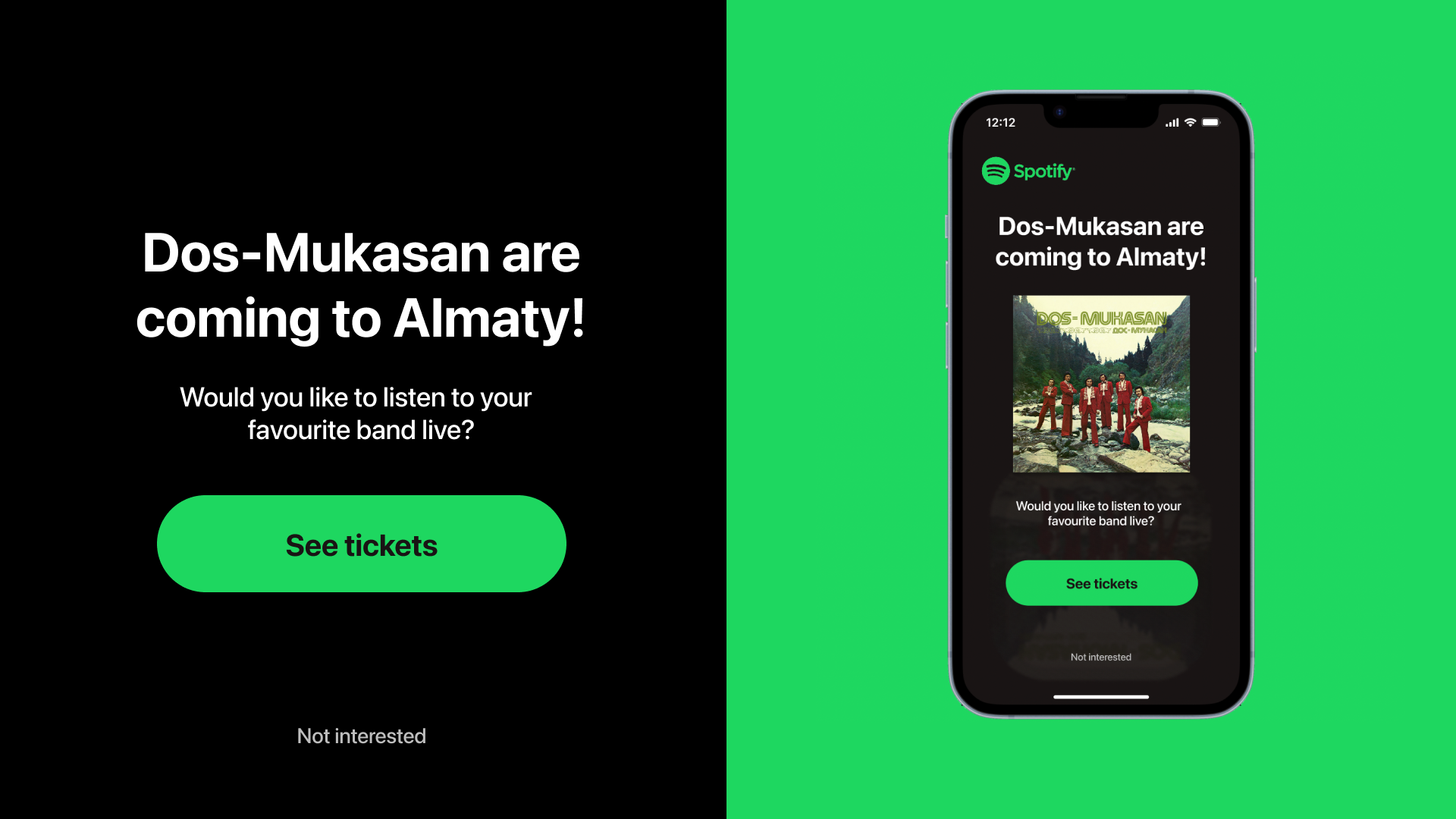

Day 9: An error message for an expired credit card.


Day 10: Asking for the user’s location to personalize their car search.


Day 11: A title & meta description for a contact lens subscription aimed at elderly users.


Day 12: Telling the user that the system can’t process their name.


Day 13: Alerting a busy truck driver about a timing dillema.


Day 14: Notifying the user about an unknown problem that stops them from accessing the app.


Day 15: The Final Challenge.
A a multi-screen onboarding experience for a banking app that automatically pays a user's bills.


Billy: A banking app that pays the user’s bills.

My idea behind “Billy” was to combine the concepts of a banking app and assistants like Siri or Alexa
to make the user’s experience feel more casual and human.

15 Day UX Writing Challenge:
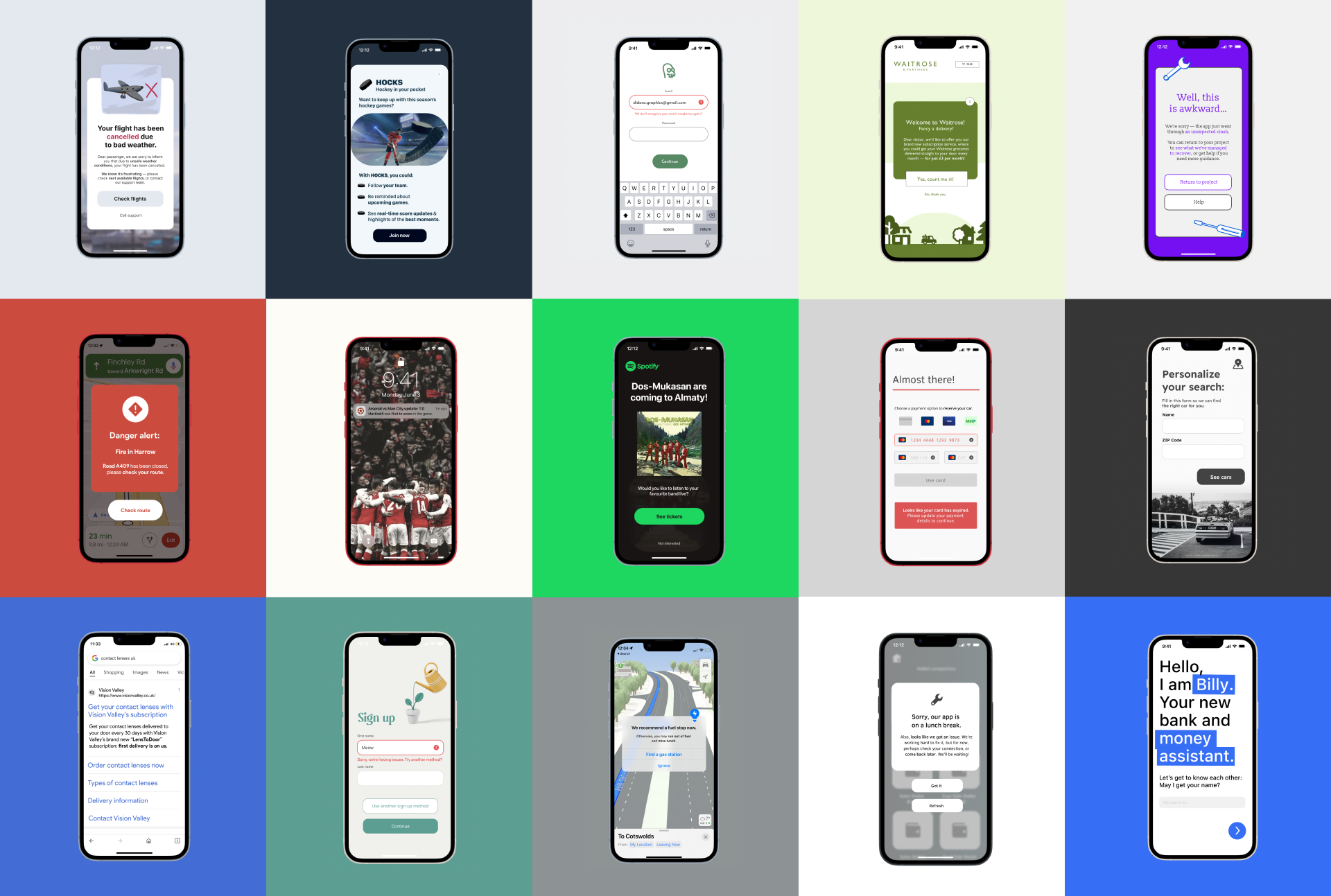
Special thanks to Ryan Farrell for creating this challenge.
← Back to everything
Behind The Scenes:
Tea with Apashka
Project:
“Tea with Apashka” — an interactive experience that introduces its users to Kazakh culture.
Problem:
How can English-speaking audiences learn about Kazakh culture in an authentic, yet playful way?
Solution:
A web-experience where an old Kazakh woman invites the user for tea, and with each tea cup, introduces the user to various aspects of Kazakh culture.
Lessons learnt:
Creating a character can be a great way to make a complex topic fun and engaging; however, the process of creating this character and their story will certainly require a lot of work in order to achieve an authentic representation. Another lesson — gamification is amazing!
Tools & Processes:
Ideation / Research / User Interviews / Procreate / Telegram / Figma / Construct 3
1. Brainstorming
Setting the learning outcomes for this project
For my final university project, I had the freedom to work on anything, as long as I would effectively develop it from start to finish — so I’ve decided to use this opportunity to work on something that could help me explore both my identity and my practice. As a result, there were two starting factors — me being Kazakh and feeling isolated from my culture, and me exploring graphic communication design. Now, who could be the wider audience that would benefit from this brief?
Finding & getting to know the audience
Other Kazakhs who grew up outside of Kazakhstan, as well as curious foreigners, would also benefit from a project that could talk about Kazakh culture in a new & exciting way. This led me to the idea of creating an engaging platform for people to learn about Kazakh culture — my next step was to get to know my audience. I was able to find my target audience through a Facebook group, and I then conducted a series of interviews to get to know what people were interested in learning about.
For my final university project, I had the freedom to work on anything, as long as I would effectively develop it from start to finish — so I’ve decided to use this opportunity to work on something that could help me explore both my identity and my practice. As a result, there were two starting factors — me being Kazakh and feeling isolated from my culture, and me exploring graphic communication design. Now, who could be the wider audience that would benefit from this brief?
Finding & getting to know the audience
Other Kazakhs who grew up outside of Kazakhstan, as well as curious foreigners, would also benefit from a project that could talk about Kazakh culture in a new & exciting way. This led me to the idea of creating an engaging platform for people to learn about Kazakh culture — my next step was to get to know my audience. I was able to find my target audience through a Facebook group, and I then conducted a series of interviews to get to know what people were interested in learning about.

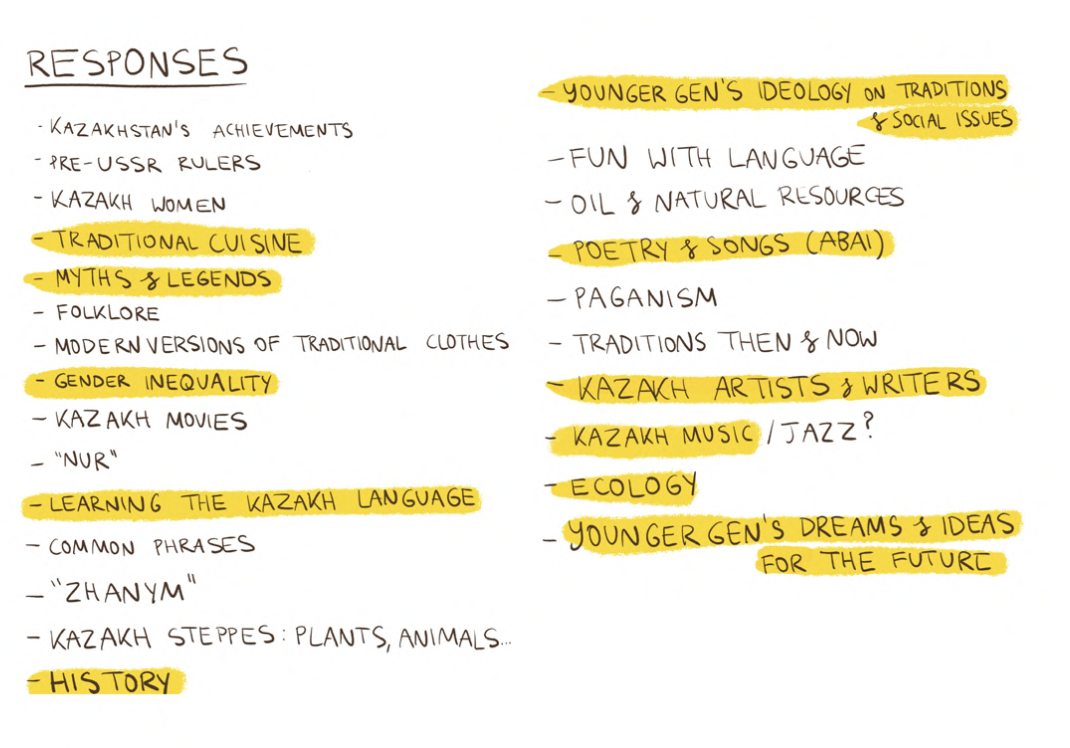
2. Defining
Initial ideas — which were nice, but lacked personality
After analysing the responses, I began creating some simple sketches and prototypes of how the platform would work. Feedback from peers and some experienced designers helped me realize that my ideas were interesting, but not engaging or personal enough. How could I make them better?




Refined idea — shaping a personality through creating a character
One of my main creative partners in life is my grandma, and talking to her made me realize that there is no better way to get to know Kazakh culture than speaking to a Kazakh grandma! The “sassy grandma” character is in fact present in many cultures, which made the idea of developing a Kazakh grandma-storyteller even more appealing to me; this character would be universal, yet still personal and unique.


3. Designing
Illustration and writing — creating Apashka’s personality
Developing Apashka’s character (“Apashka” is the Kazakh word for referring to a grandma/older woman) was a mixture of lived experience, research, doodling and mind maps. Visually speaking, I was particularly inspired by French illustration.
![]()
![]()
Prototyping on Figma and creating the experience & the Apashka ChatBot
After finishing the illustrations & a rough character storyline, I started putting those together into a fuller digital experience. I experimented with an interactive Figma prototype, which acted like a simple narration game, and a Telegram bot, where I’ve taught Apashka how to respond to a number of prompts.
![]()
![]()
![]()
Developing Apashka’s character (“Apashka” is the Kazakh word for referring to a grandma/older woman) was a mixture of lived experience, research, doodling and mind maps. Visually speaking, I was particularly inspired by French illustration.


Prototyping on Figma and creating the experience & the Apashka ChatBot
After finishing the illustrations & a rough character storyline, I started putting those together into a fuller digital experience. I experimented with an interactive Figma prototype, which acted like a simple narration game, and a Telegram bot, where I’ve taught Apashka how to respond to a number of prompts.

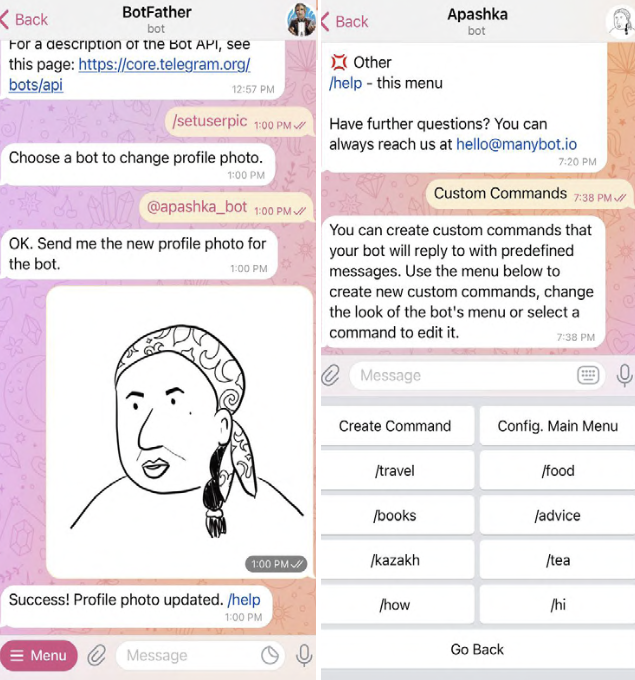

4. Testing
The experience was fun, but unclear
After testing my prototypes on a number of peers, I came to a conclusion that “Tea with Apashka” needed more depth and context, as well as a more immersive experience. A Figma prototype wasn’t enough — so I took a step back, and worked more on developing the storyline, as well as looking for other platforms where I could develop the game.
![]()
Going back to the drawing board — and improving the user journey
I’ve divided the user journey into 6 main stages, and worked further on a clear, immersive introduction, a Tearoom-homepage, and a clear ending. My next step was figuring out the technical aspect of the idea.
![]()
![]()
Learning Construct 3, and creating a full-on game: sounds, levels as cups, storytelling.
I’ve moved on from Figma to Construct 3, as it allowed me to add sounds to the experience — which made it a lot more immersive, and develop it more like a game, rather than a webpage. My grandma was kind enough to voice the experience, and adding her voiceover was a complete game-changer! Construct 3 is a platform for event-based programming, and after I’ve learnt how to use it, I was able to create a simple and fun game, where the user gets invited to have tea with Apashka, and with each tea cup, learn more and more about Kazakh culture.
After testing my prototypes on a number of peers, I came to a conclusion that “Tea with Apashka” needed more depth and context, as well as a more immersive experience. A Figma prototype wasn’t enough — so I took a step back, and worked more on developing the storyline, as well as looking for other platforms where I could develop the game.

Going back to the drawing board — and improving the user journey
I’ve divided the user journey into 6 main stages, and worked further on a clear, immersive introduction, a Tearoom-homepage, and a clear ending. My next step was figuring out the technical aspect of the idea.

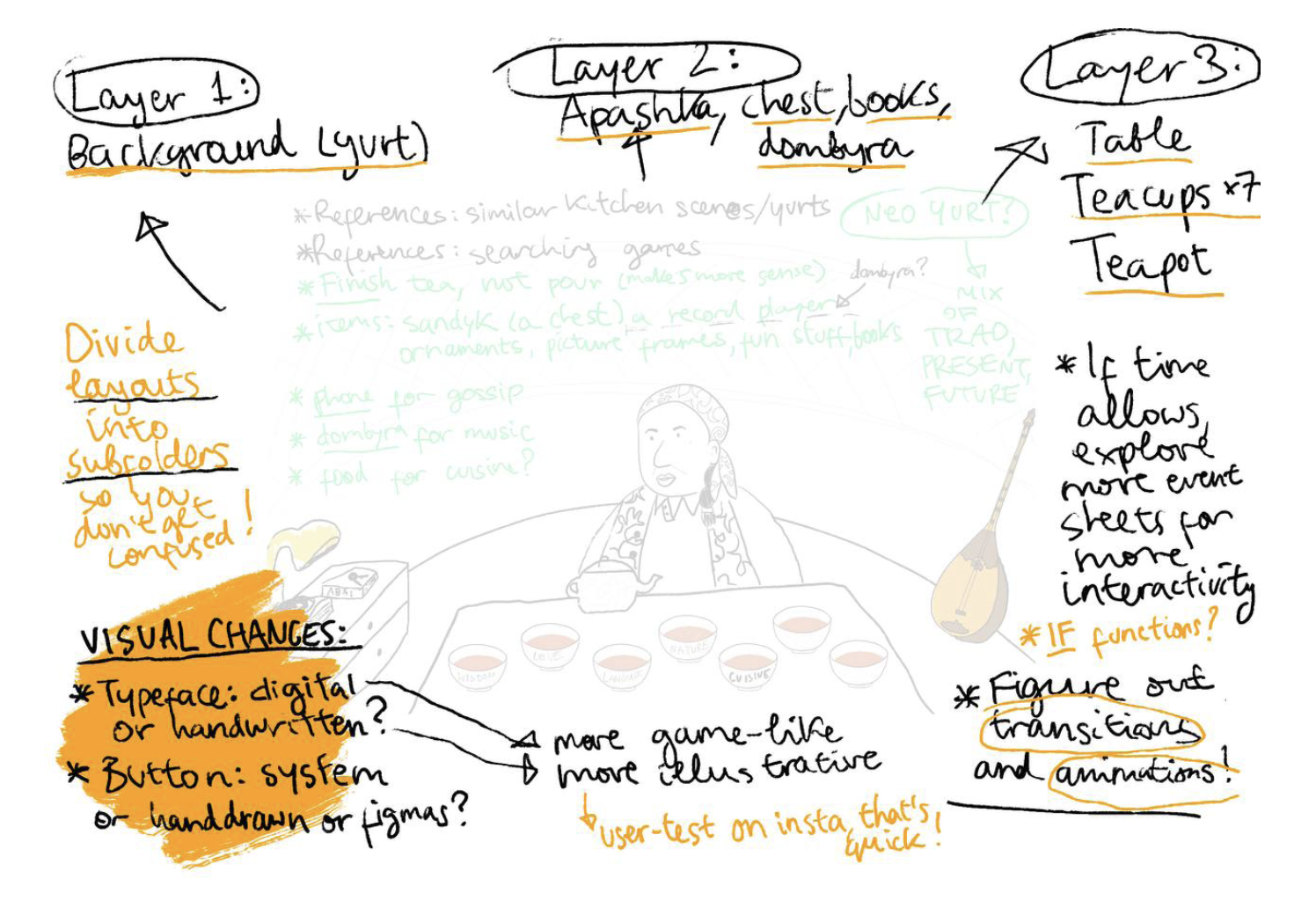
Learning Construct 3, and creating a full-on game: sounds, levels as cups, storytelling.
I’ve moved on from Figma to Construct 3, as it allowed me to add sounds to the experience — which made it a lot more immersive, and develop it more like a game, rather than a webpage. My grandma was kind enough to voice the experience, and adding her voiceover was a complete game-changer! Construct 3 is a platform for event-based programming, and after I’ve learnt how to use it, I was able to create a simple and fun game, where the user gets invited to have tea with Apashka, and with each tea cup, learn more and more about Kazakh culture.


Taking notes about my process for future reference:
Since some of my technical ideas didn’t have specific tutorials about them —such as turning a full cup of tea into an empty one after talking to Apashka, I had to be very vigilant about documenting my solutions. I can’t begin to describe the pure joy I’ve felt when I finally came up with the cups solution!


5. Launching
Putting everything together and posting on Itch
After another round of testing and checking everything, “Tea with Apashka” was finally ready to be launched & submitted as my final project — you can click here to check it out yourself. Wohoo!
![]()
Some screenshots from “Tea with Apashka”:
![]()
![]()
After another round of testing and checking everything, “Tea with Apashka” was finally ready to be launched & submitted as my final project — you can click here to check it out yourself. Wohoo!

Some screenshots from “Tea with Apashka”:


Apashka’s future
As this project is a creative experiment, rather than a finished product, it still has potential to grow, develop and make real difference. The long term goal for this experiement is to figure out how learning about culture can be a fun and enjoyable experience — just like sharing gossip over a cup of tea.
You have now reached the end of this process log. Thank you for your time! :)
